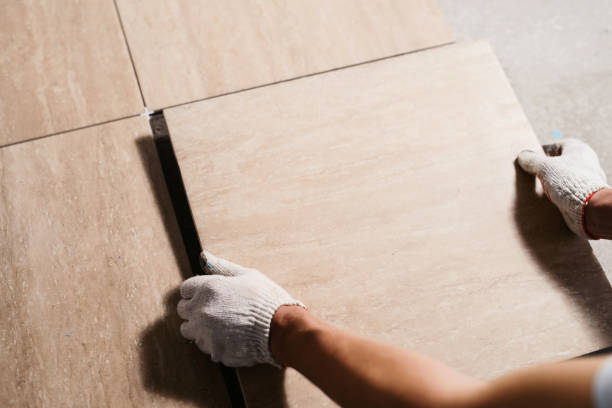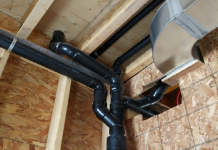One of the most important aspects when choosing wood-type ceramic floors is the installation pattern. This is because, depending on the design, the appropriate number of tablets for cutting must be selected, as well as the best material.
To make a good decision, we will explain the most common patterns for installing wood-type ceramics and their characteristics below. In addition, we will give you some useful tips on each of them.
Traditional pattern for wood-like ceramic floors
This is one of the basic patterns in interior and exterior design; the pieces are aligned in such a way that they are parallel. Also, giving a sense of order, calm and well-being in the environment.
This pattern works very well to give more space to spaces, especially if the ceramics are placed horizontally.
A good idea can be to use tablets with different widths to give more modernity to the floors in what is known as a mixed-width installation pattern.
Within the different wood-type ceramic floors, the favourite for this pattern is, without a doubt, the SPC floating floor.
The installation process is a breeze with no glue, nails or screws required! Of course, using it only in low or medium-traffic spaces such as rooms is recommended.
Traditional pattern with offset
The big difference between a traditional pattern and an offset pattern is in the placement of the pieces. While in the first one, a grid-like alignment is sought, the tablets are irregularly located in the second, with an offset of 20 to 33%.
Although the pieces can be placed horizontally, in this type of pattern, the diagonal strips stand out with an inclination of 45º.
This implies more use and quantity of material, but the advantage is that it gives spaces a greater sense of depth.
And what wood-like ceramic flooring is suitable for this installation pattern? All those that maintain their quality when cut, such as vinyl or photo-laminated, but also ceramic and porcelain.
Herringbone pattern with wood-type ceramics
This pattern has become one of the favourites for remodelling houses, as its design gives the floors a rustic-modern air.
Dating back to Ancient Rome, the Herringbone pattern has become popular for its herringbone or herringbone appearance that lends a sophisticated touch to spaces.
You can implement a diagonal herringbone format if you want to generate a more creative pattern. This design tilts the ceramic pieces a little more and gives a different visual effect.
However, an expert must carry out its installation to avoid material waste.
And which wood-like ceramic floor is ideal for this installation pattern? Wood-type porcelain tiles are often used since they are easy to cut and resistant. Therefore, they can be installed in high-traffic spaces such as rooms and corridors.
There is also a pattern similar to herringbone, known as Chevron or ZigZag. The basic difference between these two is their degree of slope, which is 45º for herringbone pattern floors and 90º for chevron floors.
Irregular cross pattern with wood-like ceramic flooring
This is one of the most complexes of the wood-type tile installation patterns. To create it, it is necessary to have a central base of 4 pieces that form an irregular cross.
That is to say that the cuts of the imitation wood-type ceramic will be made progressively and depend exclusively on the filling of the space.
Square Baskets or Checkerboard Pattern
Although not one of the most well-known patterns, it used to be used on the floors of old New York apartments. Its secret is to use four rectangular pieces of imitation wood ceramics that, when joined, form a square.
Each square must be located parallel so that, when put together, they begin to form a board.
Hence the visual perspective of a chessboard. As this can involve a lot of work, it is suggested to use floating floors for ease of installation.
Parquet 3D: rustic wood-like ceramic floors
In its traditional form, parquet (or parquet) is a material that uses different types of natural wood placed irregularly to generate different design patterns on the floors. This was very popular during the 16th and 17th centuries in France. It was used in the Palace of Versailles to replace marble floors.
Currently, other materials have been implemented, such as wood-effect ceramics, not only because of the cost reduction but also because of their durability. Classic parquet requires a lot of care during its installation and maintenance over the years.
If you want a type of floor that resembles parquet and generates incredible design patterns, you can choose porcelain tiles that already come in different shades and modern 3D effects. Some ceramics already include different traditional parquet designs.





